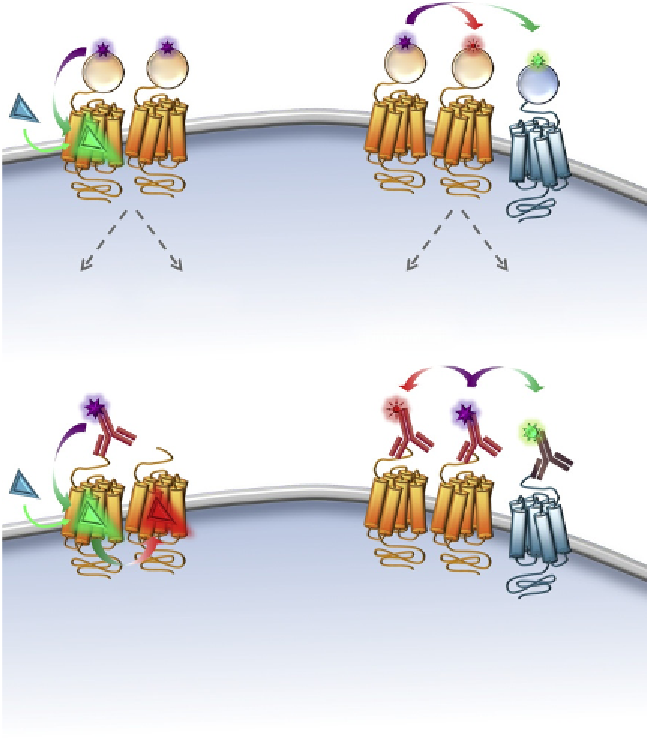Biology Reference
In-Depth Information
A
FRET
1
FRET
2
SNAP
SNAP
SNAP
SNAP
CLIP
Screen for
new ligand
Cooperativity?
Information on
oligomerization
properties (ligand
effect?)
Heteromers
identification
B
FRET
1
FRET
2
FRET
1
FRET
2
Figure 7.3 GPCR target-specific assays compatible with TR-FRET. (A) Assays based on
modified receptors. Binding experiments allow first screening for new ligands by mon-
itoring the FRET signal decrease between a SNAP-tag fused GPCR labeled with a donor
and a reference ligand labeled with an acceptor, for example. In the case of a GPCR di-
mer or oligomer, information about cooperativity between protomers, positive or neg-
ative, can also be obtained from this assay. In oligomerization assay, GPCR protomers
are fused to a self-labeling tag and labeled with a mix of donor and acceptor substrates.
If a specific FRET signal is detected, information about oligomerization properties can be
obtained, and the effect of ligands on this oligomer can be investigated. In the case of
heteromers, GPCR protomers are fused to different self-labeling tags and labeled spe-
cifically with a donor on one tag and an acceptor on the other. Heteromerization prop-
erties can again be studied if a specific FRET signal is detected between the two
receptors. (B) Assays compatible with native systems. Most of the information described
above can also be obtained in native systems using labeled antibodies recognizing the
GPCR protomer or two fluorescent ligands binding to the protomers instead of self-
labeling tags. The use of fluorescent ligands gives also access to information on the
cooperativity within the oligomer.

Search WWH ::

Custom Search